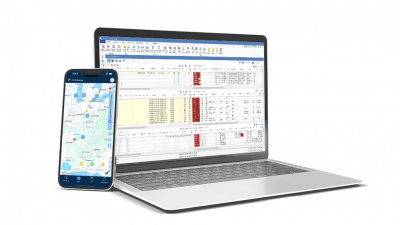Time is money in the transportation industry. Market-leading shippers understand this better than most, and many are digitizing and automating routine tasks to help people make optimal, time-saving decisions.
Investing in a transportation management system (TMS) is the best way to unlock human capital and make a positive business impact, rather than continue to waste time and money processing freight transactions manually. With the right platform, workers at all levels can utilize their skills to manage exceptions that arise from day-to-day operations and let technology handle the rest.
Identifying a Shipper TMS that best matches your needs and budget will require a thoughtful request for proposal (RFP) process to evaluate various features and prices from vendors. Starting the process from scratch is time-consuming.
Fortunately, there are ways to simplify the search and deliver better outcomes. Below, we share four steps to streamline the RFP process and find the right TMS solution for your business.
1. Define Your Needs
Multiple departments use a TMS, so it’s essential to get input from all stakeholders before making a decision. You may ask:
- What features are they looking for?
- How will transportation planners and other users work with the new solution?
- How important are analytics and reporting to key decision makers?
- How user-friendly does the platform need to be?
Collecting these inputs upfront will save you time throughout the RFP process.
Budgeting is always a concern when making a significant purchase, and a Shipper TMS is no different. Before starting the RFP process, it pays to determine how much you’re willing to spend on a new platform. This will help you narrow your options and avoid being swayed by bells and whistles you can’t afford.
2. Understand Your Options
It’s important first to understand the current technology landscape and capabilities of different solutions in the market. All TMS providers aim to help your business gain leverage to scale exponentially rather than linearly. Best-in-class software will deliver a powerful combination of ease-of-use and high levels of automation for people to focus on exceptions and errors rather than manage the details of every shipment.When assessing Shipper TMS platforms, there are three main areas of differentiation to keep in mind:
Planning
TMS platforms help users select the optimal mode of shipment based on cost, efficiency, and distance. Having decision support tools in this early stage of the supply chain will create better outcomes for:
- Load Building
- Load Planning
- Route Planning
Execution
TMS platforms that assist with shipment execution will assist with matching loads with carriers, automate routine communications, and document and track shipments. Those that provide track and trace services deliver a real-time information exchange between trading partners and customers. Overall, the most important capabilities to look for in the execution stage are:
- Tendering (for contract freight)
- Track & Trace
- Spot Quotes and Spot Transactions
Settlement
TMS solutions can assist with the finishing stages of transactions to ensure accuracy in freight billing, settlements, and reporting. The best solutions also offer workflow optimizations that measure and track performance through the entire process with intuitive reports, visual dashboards, analytics, and transportation intelligence.
3. Evaluate Solutions
After completing step one to define your needs and step two to understand the technology landscape, the RFP turns to compare specific solutions to your defined requirements. Those needs should be prioritized to properly evaluate products and vendors who align from top to bottom. You will now be ready to identify a short list of vendors and solutions to potentially move forward with. At this stage, you may find some TMS providers have solutions or plugins for tertiary services, like CRM sales opportunities and metrics reporting, that you have already invested in and are satisfied with. In such cases, you may not want to invest in a platform sold as an all-in-one solution. By clearly understanding your current landscape and where you want to go, you can determine which option is best and upgrade to a more robust TMS solution.
4. Leverage Technology
There’s no need to reinvent the wheel when issuing and evaluating an RFP for a new TMS. Many companies do it every year and leverage technology to help streamline the process from start to finish. For example, you could start by creating a spreadsheet of your needs (feel free to make a copy of ours LINK KBR spreadsheet) and create a Request for Information (RFI) form that you email to vendors. Project management systems can also help to automate the assignments and flow of routine tasks associated with an RFP, from issuing and distributing the RFI to evaluating responses and awarding the contract. Get it Right–the First Time Following these four steps will help to simplify your search for a new Shipper TMS. Taking the time to define your needs upfront, determine your budget, research available options, and leverage technology will streamline your RFP process to find the right TMS for your business quickly and efficiently. For a more in-depth resource on how to successfully navigate the search for a new TMS, including a look at innovations that will be transforming the Shipper TMS landscape, download this free guide.


